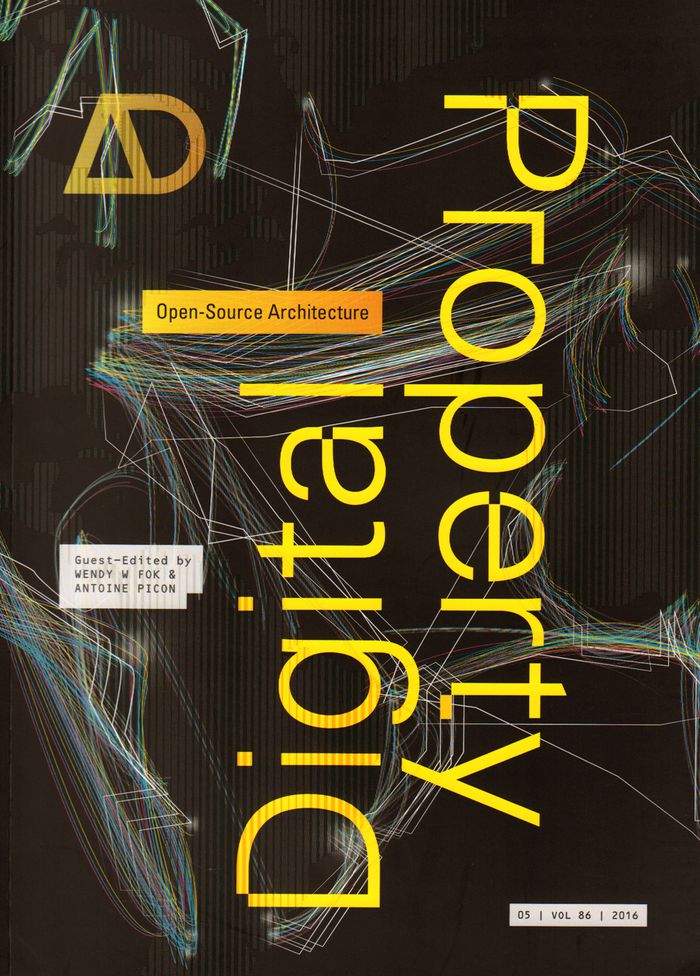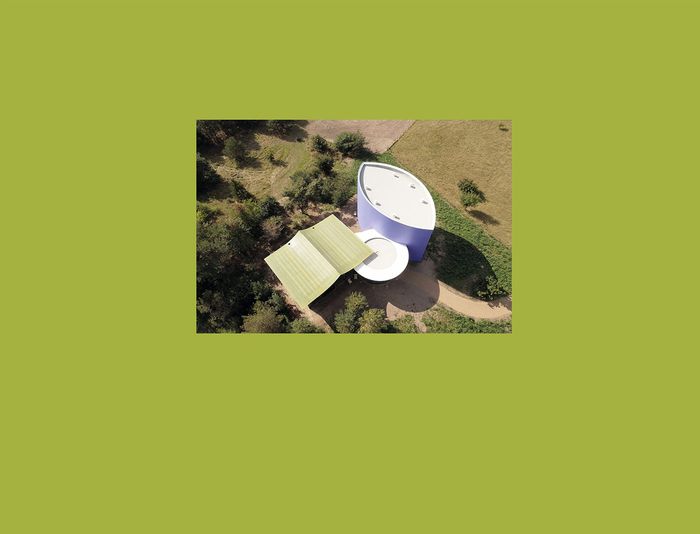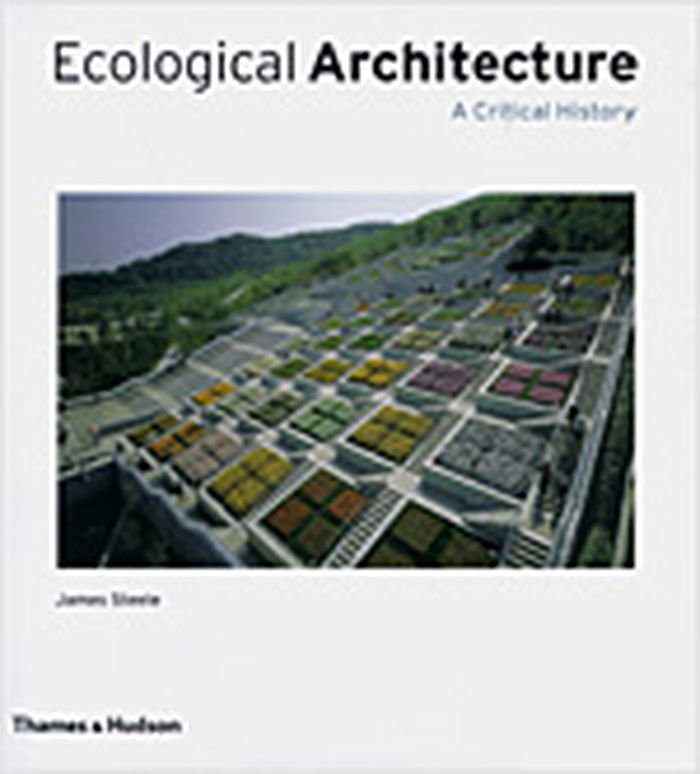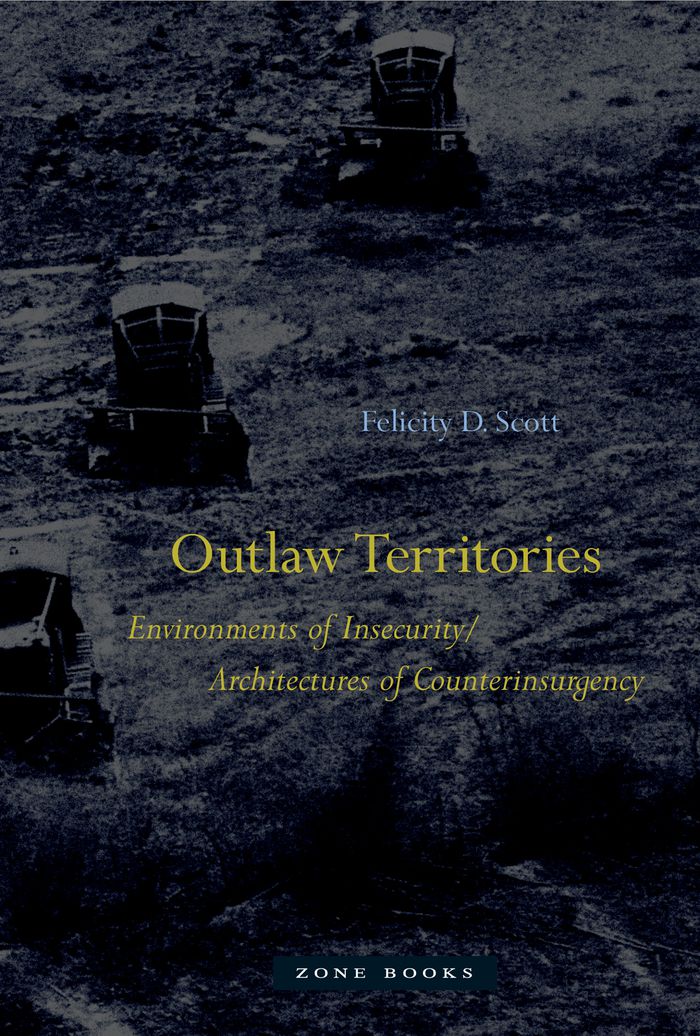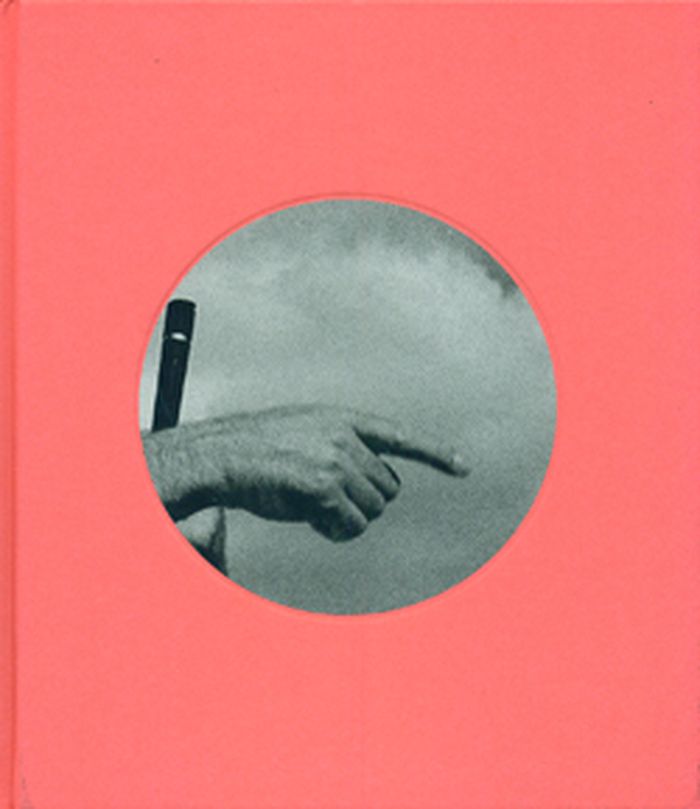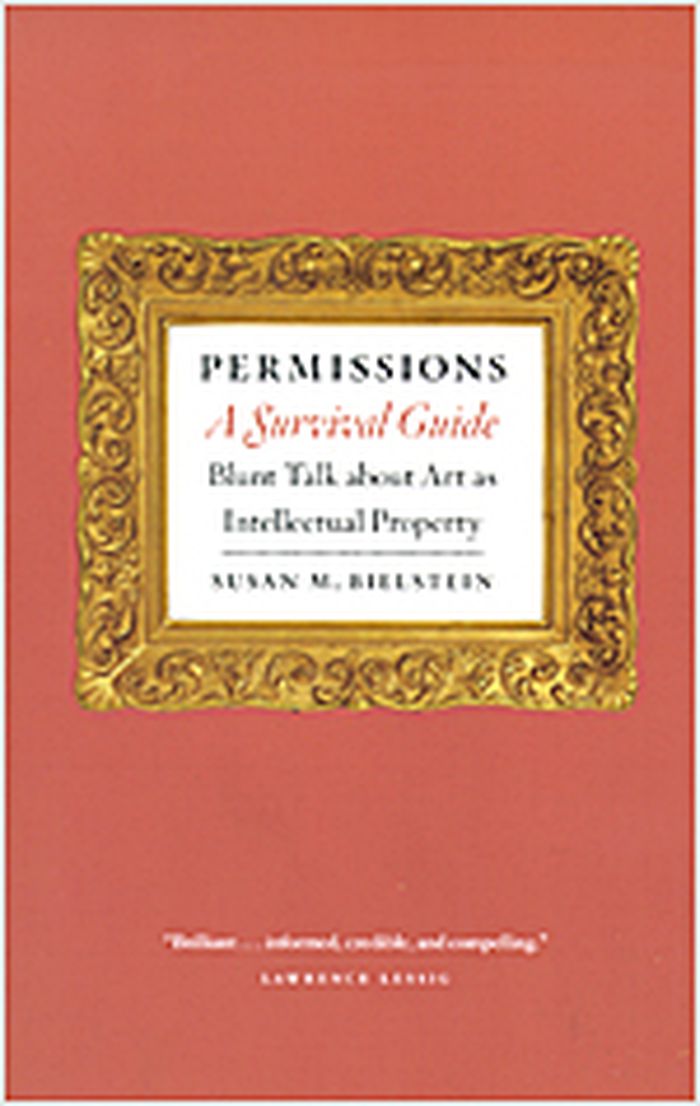$47.95
(available to order)
Summary:
Even more than authorship, ownership is challenged by the rise of digital and computational methods of design and production. These challenges are simultaneously legal, ethical and economic. How are new methods of fabrication and manufacture going to irreversibly change not only ways of working, but also designers’ ethics and their stance on ownership? In his 2013(...)
AD Digital property : open-source architecture
Actions:
Price:
$47.95
(available to order)
Summary:
Even more than authorship, ownership is challenged by the rise of digital and computational methods of design and production. These challenges are simultaneously legal, ethical and economic. How are new methods of fabrication and manufacture going to irreversibly change not only ways of working, but also designers’ ethics and their stance on ownership? In his 2013 second-term State of the Union address, President Obama stated that 3D printing ‘has the potential to revolutionize the way we make almost everything’. Nowhere will the impact of 3D printing be felt greater than in the architectural and design communities. When anyone can print out an object or structure from a digital file, will designers still exert the same creative rights or will they need to develop new practice and payment models? As architecture becomes more collaborative with open-source processes, will the emphasis on signature as the basis of ownership remain relevant? How will wider teams working globally be accredited and compensated? This issue of AD explores this subject; it features the work of designers who are developing wholly new approaches to practice by exploring means of commercialising process-based products rather than objects.
Magazines
$68.00
(available to order)
Summary:
''The triple folly'' presents the rich collaboration between artist Thomas Demand, architects Caruso St John, and textile makers Kvadrat which produced an astonishing new pavilion for Kvadrat’s Ebeltoft campus. The basis of the building is three found paper objects – a legal pad, a paper plate, and a soda jerk hat – which Demand brought to Caruso St John with the simple(...)
The triple folly (single volume)
Actions:
Price:
$68.00
(available to order)
Summary:
''The triple folly'' presents the rich collaboration between artist Thomas Demand, architects Caruso St John, and textile makers Kvadrat which produced an astonishing new pavilion for Kvadrat’s Ebeltoft campus. The basis of the building is three found paper objects – a legal pad, a paper plate, and a soda jerk hat – which Demand brought to Caruso St John with the simple question: ‘Can you make this into architecture?’ In response, the architects created a sculptural tripartite folly, a kind of inhabitable still life poised on the area’s rolling seaside hillocks, encompassing a meeting room, a kitchen, and a flexible living space which holds a textile work by the artist Rosemarie Trockel. Inspired by Kvadrat’s role as a celebrated textile producer, Demand initially pursued the idea of the tent as an archetypal architectural structure with many iterations across contexts of leisure and shelter, simplicity and grandeur. Translating these concepts into his own artistic idiom of paper, he tasked Caruso St John with materialising this lightness of form, with a touch of his distinctive, duplicitous whimsy. The final building, completed in September 2022, achieves this through a harmonious sequence of steel and fibreglass structures which create their environments through the fall of light and shadow, textured opacity and welcoming transparency.
Photography monographs
$83.00
(available to order)
Summary:
The ecological approach to building is the great untold story in the architectural history of the past century. This book is essential reading for architects and students. As an urgent wake-up call on the state of our built environment, it will be of interest to everyone who cares about the future of our planet. In the past, many of the key tenets of the ecological(...)
Ecological architecture : a critical history
Actions:
Price:
$83.00
(available to order)
Summary:
The ecological approach to building is the great untold story in the architectural history of the past century. This book is essential reading for architects and students. As an urgent wake-up call on the state of our built environment, it will be of interest to everyone who cares about the future of our planet. In the past, many of the key tenets of the ecological philosophy - sustainability, energy efficiency, harmonious relationship with the environment - appeared to stand contrast to the sweep of science-led ‘progress’ that characterized the modern movement. Today, however, past visionaries are vindicated and yesterday’s eccentricities are today’s legal requirements: every architect has an obligation to the environment as well as to his or her client. After an introduction to the terminology of ecological architecture - including terms such as ‘green’ and ‘sustainable’, ’Part one’ identifies recurring themes in ecological architecture. ‘Part two’ features twenty-five case studies each focusing on a specific architect, movement or topic. Some of the names are familiar in this context - Rasem Badran, Hassan Fathy - but there are also plenty of surprises - Le Corbusier, Buckminster Fuller, Rudolf Schindler. ‘Part three’ looks to the future as ecological architecture struggles to deal with global urbanization.
Green Architecture
$39.99
(available to order)
Summary:
At the opening of the nineteenth century, publishing houses in London, New York, Paris, Stuttgart, and Berlin produced books in ever greater numbers. But it was not just the advent of mass printing that created the era's 'bookish' culture. According to Andrew Piper, romantic writers played a crucial role in adjusting readers to this increasingly international and(...)
Dreaming in books: the making of the bibliographic imagination in the romantic age
Actions:
Price:
$39.99
(available to order)
Summary:
At the opening of the nineteenth century, publishing houses in London, New York, Paris, Stuttgart, and Berlin produced books in ever greater numbers. But it was not just the advent of mass printing that created the era's 'bookish' culture. According to Andrew Piper, romantic writers played a crucial role in adjusting readers to this increasingly international and overflowing literary environment. Learning how to use and want books occurred through more than the technological, commercial, or legal conditions that made the growing proliferation of books possible; the making of such bibliographic fantasies was importantly a product of the symbolic operations contained within books as well. Examining novels, critical editions, gift books, translations, and illustrated books, as well as the communities who made them, "Dreaming in Books" tells a wide-ranging story of the book's identity at the turn of the nineteenth century. In so doing, it shows how many of the most pressing modern communicative concerns are not unique to the digital age but emerged with a particular sense of urgency during the bookish upheavals of the romantic era. In revisiting the book's rise through the prism of romantic literature, Piper aims to revise our assumptions about romanticism, the medium of the printed book, and, ultimately, the future of the book in our so-called digital age.
Architectural Theory
books
Description:
xi, 275 pages : illustrations (some color) ; 24 cm
Toronto, Canada : Ryerson Image Centre ; Cambridge, Massachusetts : The MIT Press, [2016], ©2016
The "public" life of photographs / edited by Thierry Gervais.
Actions:
Holdings:
Description:
xi, 275 pages : illustrations (some color) ; 24 cm
books
Toronto, Canada : Ryerson Image Centre ; Cambridge, Massachusetts : The MIT Press, [2016], ©2016
books
Description:
216 pages : illustrations (some colour) ; 22 cm
Montréal (Québec) : Écosociété, [2022], ©2022
La caution verte : le désengagement de l'État québécois en environnement / Louis-Gilles Francoeur ; avec la collaboration de Jonathan Ramacieri ; préface de Robert Laplante.
Actions:
Holdings:
Description:
216 pages : illustrations (some colour) ; 22 cm
books
Montréal (Québec) : Écosociété, [2022], ©2022
books
AD Space architecture
$54.99
(available in store)
Summary:
This Architectural Design title poses a unique challenge to architects. It incites designers to respond to the limitless potential that outer space presents at the beginning of the third millennium. No longer man's final frontier restricted to the activities of government space agencies, the extraterrestial environment is soon to be opened up by private enterprises and(...)
AD Space architecture
Actions:
Price:
$54.99
(available in store)
Summary:
This Architectural Design title poses a unique challenge to architects. It incites designers to respond to the limitless potential that outer space presents at the beginning of the third millennium. No longer man's final frontier restricted to the activities of government space agencies, the extraterrestial environment is soon to be opened up by private enterprises and individuals. Featured work, by those such as WAT, Shimizu Systems and the X-Prize contenders, prove that entrepreneurial companies are already producing independent pioneering designs for the first tourists. Contributing specialists from a wide range of disciplines endorse these developments: the engineer David Ashford describes the viability of developing commercial passenger planes for space tourism within decades and the economist Patrick Collins analyses the commercial rewards to be reaped from outer space. The social, legal and scientific effects of creating what could ultimately be an unlimited ecological zone beyond Earth are explored further. Just how far reaching the effects will be for the practice of architecture is suggested both by John Zukowsky's comprehensive overview of space architecture and Ted Krueger, who organised an architectural workshop with NASA. This is not, however, to overlook space's artistic impact on architectural design in the latter 20th century. Space Architecture also recognises the seductive power that high-technology space imagery has had for contemporary architects and their debt to film and TV, as well as cult figures such as David Bowie.
books
March 2000
Architecture since 1900, Europe
$56.95
(available to order)
Summary:
In Outlaw Territories, Felicity Scott traces the relation of architecture and urbanism to human unsettlement and territorial insecurity during the 1960s and 1970s. Investigating a set of responses to the growing urban unrest in the developed and developing worlds, Scott revisits an era when the discipline of architecture staked out a role in global environmental(...)
Outlaw Territories: Environments of Insecurity/ Architectures of Counterinsurgency
Actions:
Price:
$56.95
(available to order)
Summary:
In Outlaw Territories, Felicity Scott traces the relation of architecture and urbanism to human unsettlement and territorial insecurity during the 1960s and 1970s. Investigating a set of responses to the growing urban unrest in the developed and developing worlds, Scott revisits an era when the discipline of architecture staked out a role in global environmental governance and the biopolitical management of populations. She describes architecture’s response to the displacement of persons brought on by migration, urbanization, environmental catastrophe, and warfare, and she traces architecture’s relationship to the material, environmental, psychological, and geopolitical transformations brought on by postindustrial technologies and neoliberal capitalism after World War II. At the height of the U.S.-led war in Vietnam and Cambodia, with ongoing decolonization struggles in many parts of the world, architecture not only emerged as a target of political agitation because of its inherent normativity but also became heavily enmeshed with military, legal, and humanitarian apparatuses, participating in scientific and technological research dedicated to questions of international management and security. Once architecture became aligned with a global matrix of forces concerned with the environment, economic development, migration, genocide, and war, its role shifted at times toward providing strategic expertise for institutions born of neoliberal capitalism. Scott investigates this nexus and questions how and to what ends architecture and the environment came to be intimately connected to the expanded exercise of power within the shifting geopolitical frameworks at this time.
Architectural Theory
$55.00
(available to order)
Summary:
People in trouble laughing pushed to the ground. Soldiers leaning, pointing, reaching. Woman sweeping. Balloons escaping. Coffin descending. Boys standing. Grieving. Chair balancing. Children smoking. Embracing. Creatures barking. Cars burning. Helicopters hovering. Faces. Human figures. Shapes. Birds. Structures left standing and falling... The Belfast Exposed Archive(...)
Adam Broomberg & Oliver Chanarin : people in trouble pushed to the ground
Actions:
Price:
$55.00
(available to order)
Summary:
People in trouble laughing pushed to the ground. Soldiers leaning, pointing, reaching. Woman sweeping. Balloons escaping. Coffin descending. Boys standing. Grieving. Chair balancing. Children smoking. Embracing. Creatures barking. Cars burning. Helicopters hovering. Faces. Human figures. Shapes. Birds. Structures left standing and falling... The Belfast Exposed Archive occupies a small room on the first floor at 23 Donegal Street and contains over 14,000 black-and-white contact sheets, documenting the Troubles in Northern Ireland. These are photographs taken by professional photo-journalists and 'civilian' photographers, chronicling protests, funerals and acts of terrorism as well as the more ordinary stuff of life: drinking tea; kissing girls; watching trains. Belfast Exposed was founded in 1983 as a response to concern over the careful control of images depicting British military activity during the Troubles. The marks on the surface of the contact strips – across the image itself – allude to the presence of many visitors. These include successive archivists, who have ordered, catalogued and re-catalogued this jumble of images. For many years the archive was also made available to members of the public, and sometimes they would deface their own image with a marker pen, ink or scissors. So, in addition to the marks made by generations of archivists, photo editors, legal aides and activists, the traces of these very personal obliterations are also visible. They are the gestures of those who wished to remain anonymous.
Photography Collections
$18.95
(available to order)
Summary:
If a picture is worth a thousand words, then it's a good bet that at least half of those words relate to the picture's copyright status. Art historians, artists, and anyone who wants to use the images of others will find themselves awash in byzantine legal terms, constantly evolving copyright law, varying interpretations by museums and estates, and despair over the(...)
Museums and Universal Exhibitions
June 2006, Chicago, London
Permissions, a survival guide : blunt talk about art as intellectual property
Actions:
Price:
$18.95
(available to order)
Summary:
If a picture is worth a thousand words, then it's a good bet that at least half of those words relate to the picture's copyright status. Art historians, artists, and anyone who wants to use the images of others will find themselves awash in byzantine legal terms, constantly evolving copyright law, varying interpretations by museums and estates, and despair over the complexity of the whole situation. Here, Susan Bielstein offers her decades of experience as an editor working with illustrated books. In doing so, she unsnarls the threads of permissions that have ensnared scholars, critics, and artists for years. Organized as a series of “takes” that range from short sidebars to extended discussions, "Permissions, a survival guide" explores intellectual property law as it pertains to visual imagery. How can you determine whether an artwork is copyrighted? How do you procure a high-quality reproduction of an image? What does “fair use” really mean? Is it ever legitimate to use the work of an artist without permission? Bielstein discusses the many uncertainties that plague writers who work with images in this highly visual age, and she does so based on her years navigating precisely these issues. As an editor who has hired a photographer to shoot an incredibly obscure work in the Italian mountains (a plan that backfired hilariously), who has tried to reason with artists' estates in languages she doesn't speak, and who has spent her time in the archival trenches, she offers a snappy and humane guide to this difficult terrain.
Museums and Universal Exhibitions
